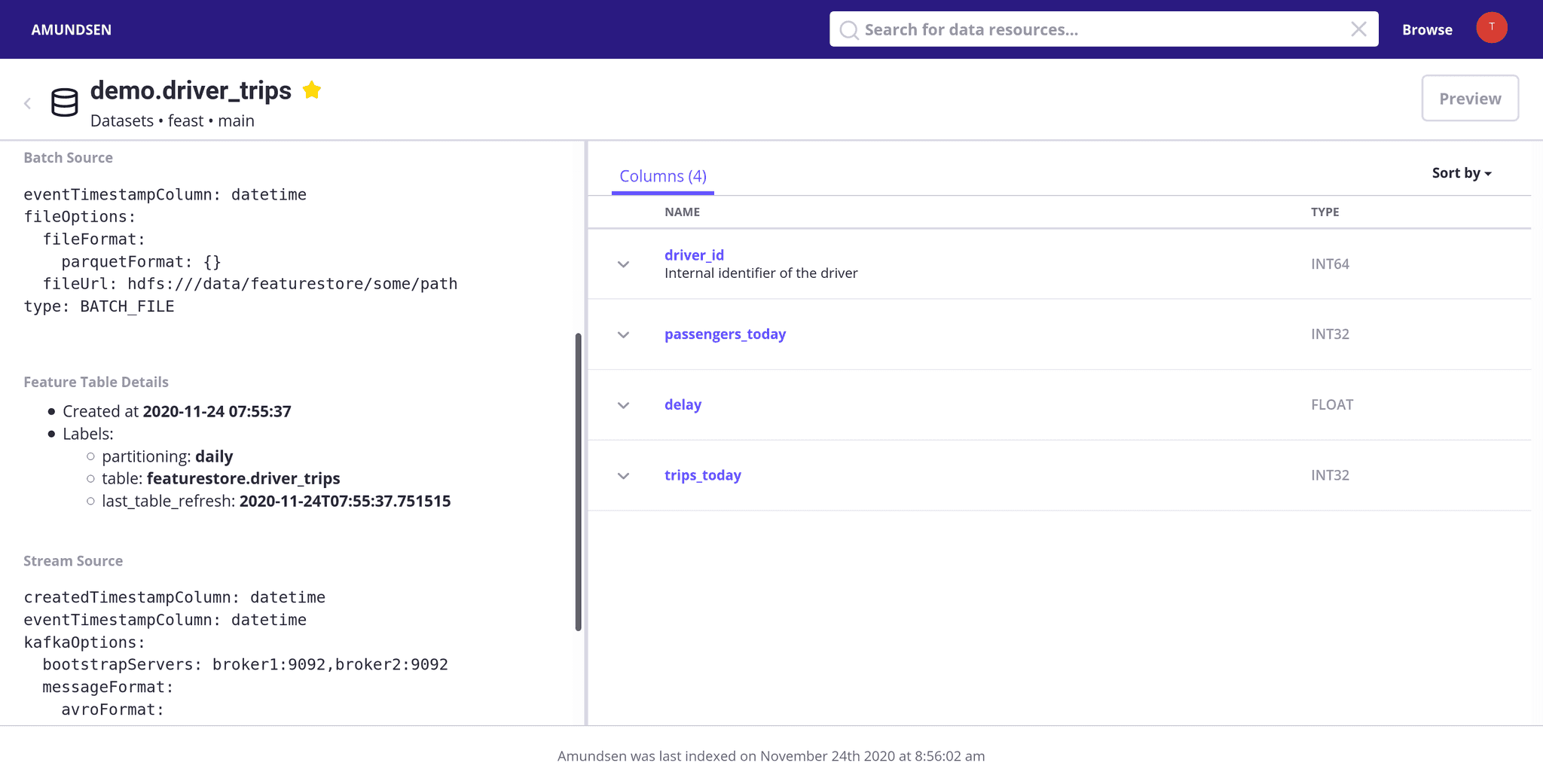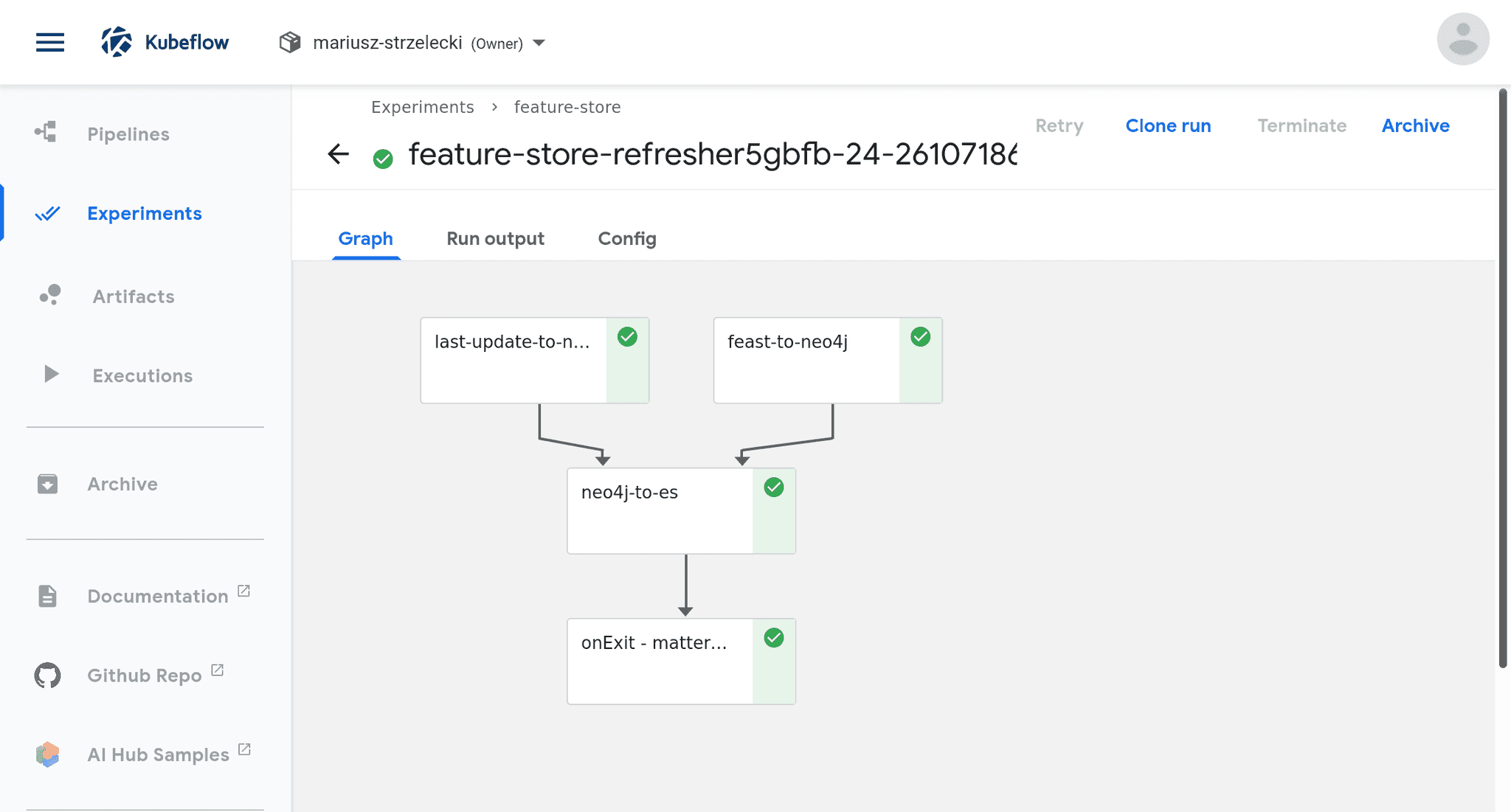
One of the main challenges of today's Machine Learning initiatives is the need for a centralized store of high-quality data that can be reused by Data Scientists across different models. Tools that fulfill that gap are named Feature Stores, and you can read about them in fantastic Adi’s post: What are Feature Stores and Why Are They Critical for Scaling Data Science?
Many companies deploy Feature Store according to their needs, but one of the most popular, open-source implementations is Feast. Feast recently joined LF AI&Data Foundation as a reference solution to store features by:
- Providing a single data access layer that decouples models from the infrastructure used to generate, store, and serve feature data.
- Decoupling the creation of features from the consumption of features through a centralized store, thereby allowing teams to ship features into production with minimal engineering support.
- Providing point-in-time correct retrieval of feature data for both model training and online serving.
- Encouraging reuse of features by allowing organizations to build a shared foundation of features.
- Providing data-centric operational monitoring that ensures operational teams can run production machine learning systems confidently at scale.
For one of the projects I’m working on in GetInData, Feast was selected as a backend behind the feature store. The core components installation allows users to register, browse and update features definition using Python SDK, but this is not the most user-friendly interface - it lacks a full text search API and ability to collaborate on the features (like adding and editing descriptions). And the only gateway to the data is Python REPL or Jupyter, so it requires some coding skills to access the data.
In search of the Feast UI
“With 1.2k stars on github there must be an UI somewhere” - this was my first thought. Unfortunately, the project name is not super-unique, so entering “feast ui” in google doesn’t provide very meaningful results. But it leads to some interesting insights:
I tried to revive the old UI, but without success. At this point in time, I was really close to starting the development of the UI myself, but decided to try another way first.
Meet Amundsen
Amundsen is a data discovery tool that collects metadata from your databases, pushes them to internal Neo4j graph database and Elasticsearch and exposes using a nice, interactive frontend. The tool is widely adopted in Lyft, ING and many data-oriented projects supported by GetInData. Using the web portal users can search for the data they are interested in, assign tags, mark datasets as “starred” and even edit descriptions of the tables and columns. What is also interesting, it is part of the LF AI&Data as well.
Usually, you use Amundsen to load the structure from your database (using databuilder) into database-oriented format and structure with:
- column being a part of the table,
- table residing in schema,
- schema being stored in cluster,
- cluster belonging to some kind of database technology.
At first glance, the structure doesn’t really fit the Feast schema, as the structure there looks like this:
- entity and feature are properties of the feature table,
- feature table as many properties: labels, definition of batch source and - optionally - stream source
- entity and feature table are registered within a project
But, still, users can imagine these data in a tabular form with this mapping:
- columns are either entities or features,
- table is simply a feature table ,
- database is a feast project,
- cluster is a name of feast instance (usually there is only one in the company),
- database technology is always “feast”.
With this mapping in mind I was finally able to try Amundsen as a Feast user interface!
Amundsen’s Feast Extractor
Implementation of Amundsen extension to scrap the Feast for the metadata turned out to be a straightforward task. Databuilder concept defines the Extractor as a simple class that generates the objects with metadata one after another, so a few calls using Feast’s Python SDK solves it completely. Recently, my implementation was merged into Databuilder master, so you can try it yourself! The job that does all the job can be defined as in the sample script.
Apart from features and entities, the Extractor pushes data exposed by Feast:
- feature table creation date
- labels
- specification of batch source
- (if there is a stream source) specification of stream source.
On the Frontend it looks as follows:

On the left, you can see all the information extracted from Feast, on the right list of entities and features in the tabular form.
The process to extract the data from Feast to Amundsen runs every hour in form of Kubeflow Pipelines scheduled workflow:

Summary
Amundsen’s frontend solves all the requirements that I had for a Feast UI:
- all features are searchable by their name and description
- the descriptions can be modified without leaving the UI, giving great collaboration opportunities
- feature tables tagging for easier discovery
- feast project name indicating readiness for the feature table to be used in models (with names: dev, test, beta, prod)
- quick preview of the features sample (requires Apache Superset setup and a bit of configuration)
- ability to present features statistics, like count of nulls, mean value of average string length (requires a bit of extra work, as Feast does no longer store statistics internally since 0.8 release)
If you plan to use Feast, but you’re a bit afraid of the lack of user interface, definitely try Amundsen with FeastExtractor. Both projects are supported by LF AI&Data, so they are not going anywhere soon. And, to be frank, seeing how these two can support each other just blew my mind ;-)
If you're looking for a company to help you scale and operationalize your ML efforts with tools like Feast and Kubeflow, just write to us.


